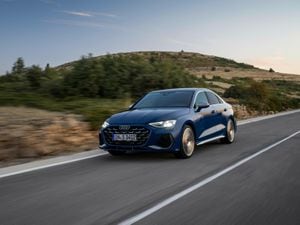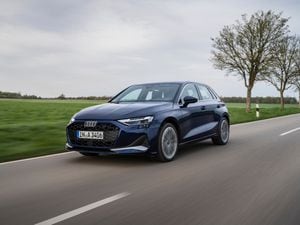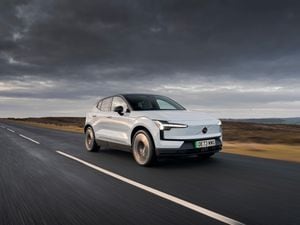First Drive: The Jaguar XF Sportbrake is a tempting alternative to German rivals
Tom Wiltshire headed to Portugal to test Jaguar’s latest estate car – the XF Sportbrake
What is it?
Sportbrake is Jaguar slang for estate car – so the XF Sportbrake is the eagerly anticipated estate version of the handsome XF saloon. Sat in a competitive class of premium estates thatincludes the BMW 5 Series Touring, Mercedes E-Class Estate and Audi A6 Avant, Jaguar also has pressure from below with cars like the Volkswagen Passat Estate nipping at the low-end of the model lineup.
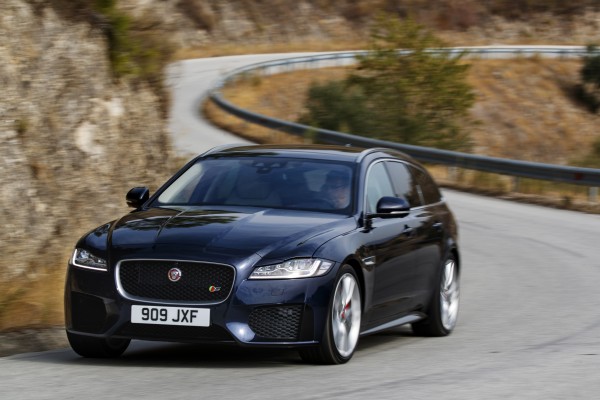
That’s not forgetting the vast pressure on this market sector from the juggernaut that is the family SUV. The Mercedes GLC, Audi Q5 and even Jaguar’s own F-Pace are all muscling in on the estate car’s territory.
We headed to Portugal to see if the British-built Sportbrake has what it takes to stick it to the German competition.
What’s new?
Clearly, the biggest difference is the extra metal above the rear axle to turn this from XF Saloon into XF Sportbrake. Other than that, there aren’t many changes externally.
The Sportbrake is only 1mm longer than the saloon it’s based on, but the higher roofline means a more practical interior – rear passengers will appreciate the extra headroom. Jaguar’s also fettled around underneath the car, fitting air suspension at the rear to keep it level no matter how much you load in the boot.
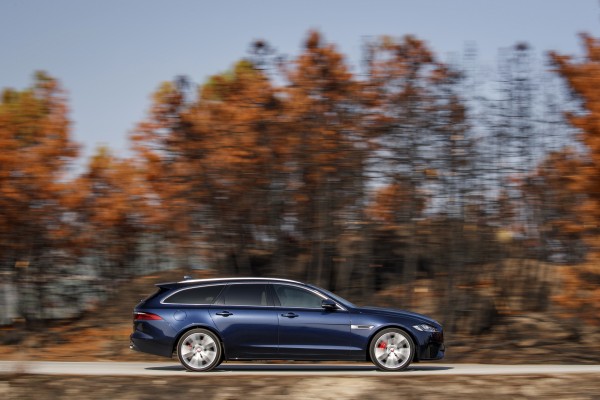
The XF Sportbrake also comes with Jaguar’s latest InControl Pro touchscreen infotainment system as standard.
What’s under the bonnet?
We tested three engines – a 2.0-litre petrol with 246bhp, 2.0-litre diesel with 236bhp, and a 3.0-litre diesel with 296bhp.Jaguar expects the 2.0-litre diesel to take the majority of sales. It’s available in 161bhp, 178bhp and 236bhp forms, with the middle expected to be the most popular.
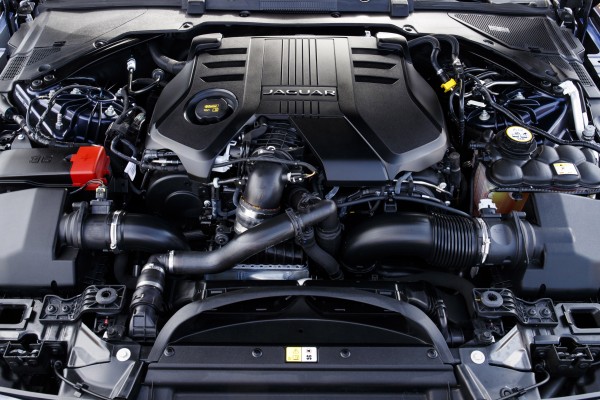
Our 236bhp unit had plenty of performance for most drivers, and once you settle down to a cruise, it’s pleasantly refined. It’s mated exclusively to all-wheel drive in the UK, which brings fuel economy down to 48.7mpg. That’s a fair way below the BMW 525d Touring, though, which achieves a minimum of 57.6mpg from its 231bhp engine.
If you can afford it we’d recommend stretching to the more powerful, 296bhp 3.0-litre V6 diesel.
This range-topping oil-burner is smoother than the four-cylinder engines – especially at higher revs – and has bags of low-end torque. Despite the larger capacity, it’s actually more economical than the 2.0-litre diesel, at 49.6mpg combined, and the real-world gap would likely be even bigger given the need to push the smaller units that much harder.
If you want petrol, you only have one choice in the UK – a 2.0-litre four-cylinder with 246bhp. Performance is good, but it needs to be worked far harder than the diesels. That harms refinement, and also means you’re unlikely to achieve the 41.5mpg claimed fuel economy figure. Jaguar won’t bring the 3.0-litre V6 petrol engine into the UK market – there’s just no chance it will sell.
All engines bar the entry-level 2.0-litre are mated to a smooth-shifting eight-speed automatic gearbox as standard equipment, with that base unit sending power through a six-speed manual.
What’s it like to drive?
Jaguar knows how to build a tidy-handling car, and the XF Sportbrake is no exception. It comes very close to the perfect balance of ride and handling – remaining comfortable and composed at a cruise, but able to pick up its petticoats once you get onto a twisting B-road.
With sharp and direct steering, the XF Sportbrake is a joy to drive regardless of which engine you have fitted. Most impressive is the way it hides its weight – from behind the wheel, you can forget this car tips the scales at almost two tonnes.
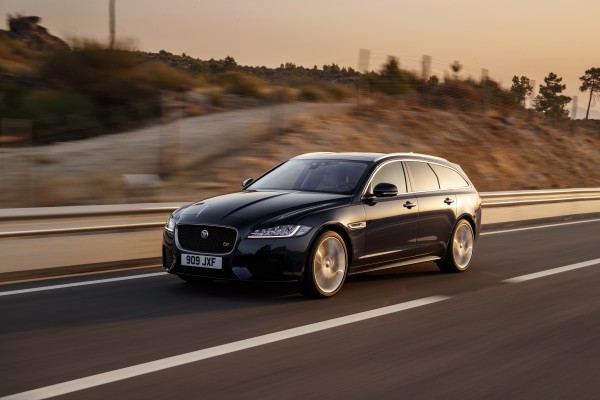
Step from a Volvo V90 or Mercedes E-Class Estate and the XF Sportbrake will feel like a sports car in comparison. That’s not to say it can’t do comfort too – switch out from Sport mode, leave the gearbox in auto and the XF will waft along with the best of its rivals. The rear air springs help here, as do the excellent seats, which are very comfortable and supportive.
How does it look?
There’s no other way to put it – the Jaguar XF Sportbrake is a very handsome car. Near-perfect proportions and a shapely rather than ungainly rear end mean you won’t be remotely embarrassed about choosing the ‘practical’ option in the XF range. Unlike the first car, this generation of XF had an estate variant planned from the beginning, and the cohesive exterior design really shows this.
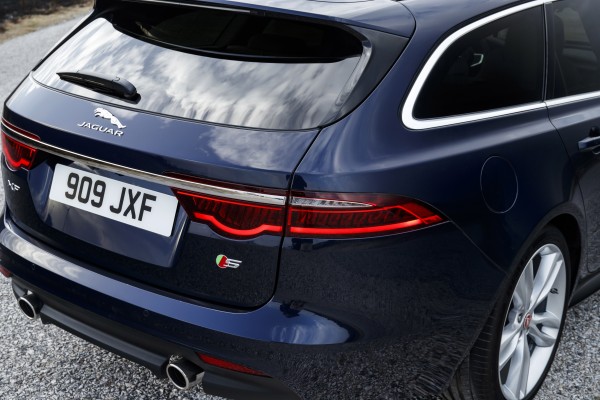
The front end remains unchanged from the saloon, which again is no bad thing. A bold, upright grille is flanked by slim headlights with a distinctive running light pattern. We just wish Jaguar would hide its sensor array better – it’s in a shiny square surrounding the Jaguar badge, giving the impression of an unwelcome wart on a pretty face.
What’s it like inside?
The interior is where Jaguar has traditionally lost out to its German competition, and the same is true of the XF Sportbrake. It blows the aging Audi A6 Avant out of the water, but cannot compete with the quality and usability of the BMW 5 Series or Mercedes E-Class.
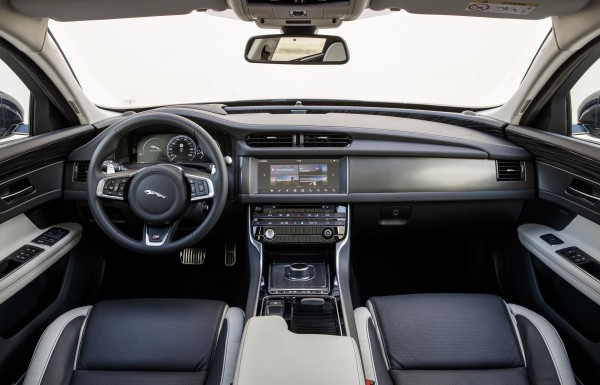
You sit quite low in the cockpit, with the high window-line making for a rather cocooned feeling. The centre console is all sensibly laid out, and some may prefer the Jag’s straight-laced design to the Mercedes E-Class or Volvo V90’s high-tech and button-light approach. However, short of the rising rotary gear selector and swivelling air vents, the interior lacks any real theatre.
While Jaguar’s latest InControl Pro infotainment is a vast improvement on the old system, it’s already feeling dated. It misses out on the essential Apple CarPlay or Android Auto, and the interface isn’t the most intuitive. The screen itself is clear and responsive though, as are the LCD dials.
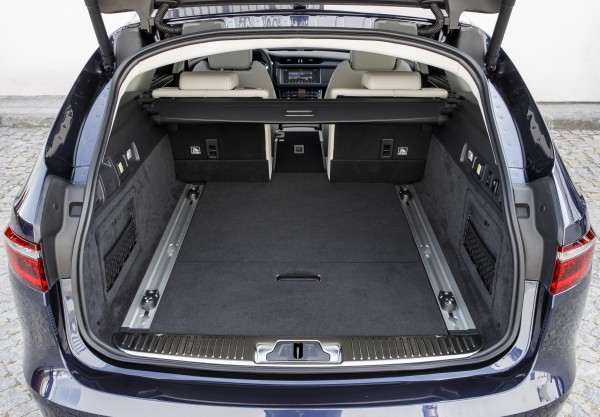
It’s in the back where the Sportbrake plays its trump card over the saloon. Even with a panoramic glass roof fitted, headroom is vastly improved, and six-footers could sit in comfort.
The boot’s 565-litre capacity with the seats up (1,700 litres with them folded) is about average for the class, but the load area is usefully square and totally flat.
What’s the spec like?
There are four trim levels to choose from – Prestige, Portfolio, R-Sport and S. All cars come with sat-nav, leather upholstery and rear parking sensors. Prestige cars come on fairly weedy 17-inch alloy wheels.
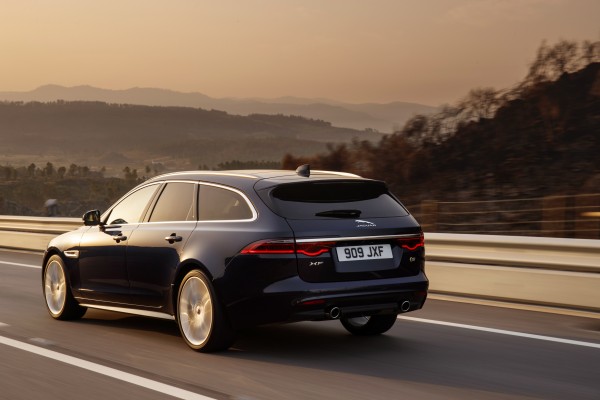
You can step up in two directions – luxury or sporty. Luxurious Portfolio adds wood trim to the interior, an upgraded sound system, a rear camera and heated windscreen, while R-Sport adds stiffer suspension, body-hugging sports seats and a mean-looking R-Sport bodykit.
S trim upgrades R-Sport with 19-inch wheels, as well as some other goodies.
We’d recommend ticking the box for the active safety pack, which gives adaptive cruise control, lane-keeping assist and blind sport monitors.
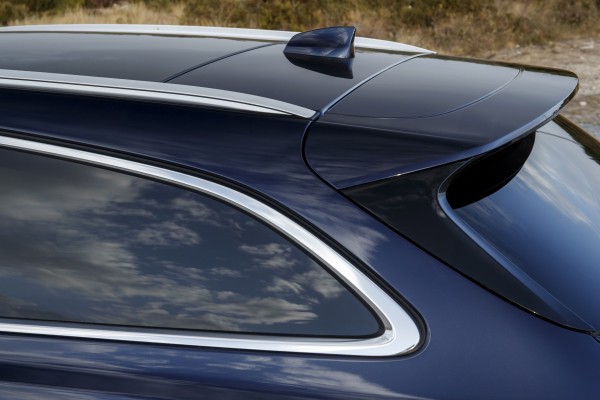
The XF Sportbrake’s £34,910 starting point puts cars equipped with the 161bhp engine within reach of high-spec models from the class below, like the Volkswagen Passat. Our preferred 3.0-litre V6 diesel model does weigh in at £49,600, but that’s competitive with the class. The popular choice will likely be the 178bhp 2.0-litre diesel – that starts from £37,160.
Verdict
Enthusiasts should quite rightly be drawn to the XF Sportbrake – it’s simply the best car to drive in its sector, which makes it a compelling package as well as a good-looking one. It’s let down by a slightly outdated interior, and fuel economy isn’t quite up to rival’s standards (at least on paper). But more choice is never a bad thing, and Jaguar’s created a car that can – and should – tempt buyers away from the German competition.
FACTS AT A GLANCE
Model: Jaguar XF Sportbrake S
Price as tested: £52,400
Engine: 3.0-litre V6 twin-turbo diesel
Power (bhp): 296
Torque (Nm): 700
Max speed (mph): 155
0-60mph: 6.1seconds
MPG (combined): 47.9
Emissions (g/km): 154

